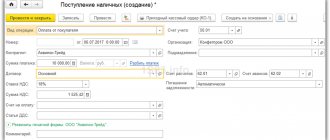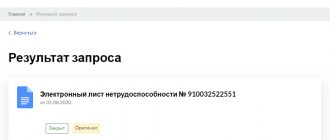When you open a bank account, you receive a combination of numbers, which is essentially an individual code for storing funds. In general, you do not need to know all the features of decryption - banks operate strictly within the law, and the combination of numbers is generated by the computer system. However, it is still worth knowing the hardware: a mistake in two digits when sending a payment to the account of a legal entity can cost you time and money. You will also know more about your business partners by carefully studying their checking account.
Bank account structure
A current account consists of 20 numbers, each of which has its own purpose. All numbers included in the number are divided into groups. A separate group reflects a certain characteristic of the account. At the same time, externally, the invoice on the payment document or in the company details looks like one long number without any spaces or dots.
If we consider the meaning of the account, it is more convenient to do this by dividing the number into groups: 111.22.333.4.5555.6 666 666. Each section has its own definition:
- 111 - account of the 1st order of the bank balance (using these numbers you can find out who opened the account and for what purposes)
- 22 - account of the 2nd order of the bank balance (the numbers make it clear the specifics of the account owner’s activities)
- 333 - currency in which the funds in the account are stored
- 4 - verification code
- 5555 - combination indicating the bank branch in which the account is opened
- 6 666 666 — serial number of the bank account
Bank accounts are opened for individuals, various organizations and government agencies. Therefore, there are very different combinations of account numbers. It is important not to make the wrong numbers when sending a payment, otherwise the funds will go to another recipient. What combinations of numbers can there be within one account? We talk about this below.
Find owner by card number
If you find a bank card, the best solution is to return it to the owner. What to do if the owner's name is not indicated on the card. Most likely, each of us has already encountered instant cards where “MOMENTUM” is written instead of a name. Remember that such plastic, although not signed, is attached to a personal current account.
In such a situation, you can try logging into your online bank and trying to find out the owner’s name through a transfer using the card number. To do this, you do not need to actually transfer money, but only indicate a 16-digit number. As a rule, the full name to whom the transfer will be made will then be revealed. In some banks, only the first letter of the last name is indicated, which complicates the search for a person.
Attention!
The information displayed in the online bank is real, since when entering a client into the database, the bank uses the citizen’s passport data.
Using the information received, you can try to find the person on social networks or in any convenient search engine. Unfortunately, there is no other way to return the lost card to its owner.
Also, in order not to search on your own and waste time, but still want to return the card, try contacting the branch of the issuing bank that is indicated on the card. Bank employees will be able to independently identify the confused owner and call him to come to the branch and pick up the lost card.
Reference!
Information about the bank that issued the plastic card is located on both sides. The name or logo of the organization will be written on the front side, and on the back you can also find the address and telephone number of the bank.
If you still need to find out who the owner of the account is, but you can’t do it yourself, then you can try contacting a detective agency. There, a private detective will legally find and provide available data. When asking for help, remember that this service is paid.
How is it deciphered?
Now let's look in more detail at what it means to decipher the first 5 digits in a current account. They constitute a certain group of bank balance sheet accounts. These accounts are approved by the Bank of Russia and include two sections.
The first consists of three numbers and means the specifics of the calculations. For example, the following combinations have different meanings:
- from 102 to 109 - fund accounts, as well as capital storage, profit and loss accounting
- 203 and 204 - accounts for accounting for precious metals
- from 301 to 329 - accounts for transactions between banks
- 401 and 402 - accounts for transfers to the budget
- 403 - management of money managed by the Ministry of Finance
- 404 - off-budget funds
- 405 and 406 - accounts of state companies
- 407 - legal companies and individual entrepreneurs
- 408 – individuals
- from 411 to 419 - deposits opened by government agencies
- from 420 to 422 - storage of funds of legal entities
- 423 — deposit opened by a resident individual
- 424 - funds of foreign companies
- 425 - funds on deposit belong to a non-resident individual
- 430 - bank funds
- from 501 to 526 - accounts necessary for accounting for securities
The next 2 digits of numbering in a bank account complement the previous 3 and are interpreted inseparably with them. Let's look at the example of legal companies (the first three digits are 407):
- 40 701 - the organization is related to the financial sector (this could be a microfinance company, a pension fund, etc.)
- 40 702 - this includes open and closed companies
- 40 703 – accounts of non-profit associations
- 40 704 - funds allocated for elections or public meetings
Where is the card account number used?
The card account number is necessary to send money to it - transfers from relatives, salaries, pensions, scholarships, child benefits, assistance to the unemployed and other types of assistance from the state.
- Apply for a credit card “365 days without interest” from Alfa-Bank, eternal free service, 1 year without interest on any purchases, free cash withdrawal without limits on the amount
- Apply for a “Halva” installment card from Sovcombank, free service, interest-free installments (including for cash withdrawals), cashback up to 6%!, interest on the balance up to 12%
- Apply for an Opencard credit card from Otkrytie Bank, free service, 1.5% cashback on all purchases!, grace period 55 days, repaying a credit card from another bank by free transfer
- Apply for a free debit card from Benefit Home Credit Bank
When making various payments to legal entities, it is also necessary (for example, payment of utilities or fines).
You must also provide your account number to receive money transfers from another state; in this case, complete data may be required.
Other sections of the account number
The next three digits on the invoice indicate the currency in which the account is opened. The most common among them are the combinations presented in the table.
| Three digits account | Currency |
| 810 | The account is opened in rubles |
| 840 | In US dollars |
| 978 | In Euro |
| 980 | In hryvnias |
| 344 | In Hong Kong dollars |
| 156 | In yuan |
For example, if a Sberbank account begins with the numbers 408, and numbers 7 to 9 indicate 643, then the account was opened by an individual in rubles. If the combination 407 018 40 is present, then the account is opened by a financial institution in dollars.
This is followed by a verification number. It is also called a key, which will allow you to find out whether the account is designated correctly using computer processing. The Bank of Russia has developed a special method for calculating it based on the remaining numbers included in the number. For the account owner, such a figure does not carry significant significance.
The next 4 digits indicate in which branch the account was opened. If zeros are indicated instead, then it is possible that the bank does not own branches and the account was opened at the head office.
The last 7 digits of the account indicate the serial register of the account in the credit institution. Any bank has the right to apply its own classification of these figures. However, there are some limitations. For example, if a correspondent account of a credit institution is opened with the Central Bank, then the last 3 digits will be the last 3 of the BIC, and the 4 before them will be zeros.
How much does it cost to open an account?
In itself, the cost of opening an account without prices for other operations within the framework of cash management services says little, but it happens that this is a fundamental issue. Here's what leading Russian banks offer:
| Bank | Cost of opening and maintaining an account |
| Sberbank | Free (minimum balance – 10 rubles) |
| Tinkoff | From 0 to 1000 rubles (when opening an account at a bank office) |
| Alfa Bank | From 0 rubles (minimum balance – from 1 ruble). |
| LokoBank | From 0 to 1300 rubles |
| UBRD | From 0 rubles |
| Dot | From 0 rubles |
| ExpertBank | From 0 rubles |
What does decryption give?
If you open a bank account, then you do not need to know all the features of deciphering its categories. Credit organizations operate on the basis of the law, and the combination of numbers is formed by a specially installed computer system. Thus, there can be no error in the numerical designations, and all accounts opened by the bank are unique and valid.
However, superficial knowledge is still useful. An error in two digits when sending a payment to a legal entity’s account may result in loss of funds. After this, you will have to draw up an application for withdrawal of money, which is not a quick operation.
It is better for an organization to have the details entered into the computer in advance, in particular the account numbers of its counterparties. This will avoid numerous mistakes. Today, most banks offer electronic services for managing accounts that allow you to save payment templates, which eliminates the need to re-enter information about the recipient of funds.
Physical account faces always begin with the numbers 408. This combination is the same for all Russian banks. Despite the fact that individual entrepreneurs also act as individuals, their accounts begin in the same way as legal entities, with 407.
Ellina Baitemirova Content Manager #VZO, is responsible for filling the site with content and updating the information provided. Graduated from KNRTU with a degree in
. Elina has been working in our project since 2022. She actively studies the financial products market and monitors all important changes.
(10 ratings, average: 4.6 out of 5)
How to open a bank account
To open an account, an individual just needs to contact the bank with a passport or submit an application online. It is possible to link several cards to one account: this option is often used by spouses or parents with children.
The rules are different for legal entities. The following list of documents must be submitted to the financial institution:
- a statement signed by the manager or chief accountant;
- charter;
- extract from the Unified State Register of Legal Entities;
- certificate from Rosstat;
- card with sample signatures and seal imprint;
- premises rental agreement or ownership documents.
For a complete list of documents, check with the company where you are going to open an account.
REFERENCE:
| Individual entrepreneurs and LLCs have the right not to open a current account if they accept payment from customers in cash and the amount of monthly receipts does not exceed 100 thousand rubles. |
FAQ
Registered LLC. How long does it take to open a current account?
According to Russian legislation, the founder of an LLC decides when to open a current account; no deadlines have been established. It is logical to do this simultaneously with the start of operating activities. If you receive cash from customers, you need to collect it to avoid problems with the tax office. By the time your counterparties transfer funds by bank transfer, you must have a current account number.
Can a bank refuse to open a current account?
Article 846 of the Civil Code of the Russian Federation does not give the bank the right to refuse to conclude an agreement to open an account with a client, except in cases where this cannot be done for internal reasons (for example, a credit institution is in bankruptcy or does not work with individual entrepreneurs, and this is enshrined in the relevant documents). If this requirement is violated, take a letter from the bank explaining why you were denied (Instruction of the Central Bank of the Russian Federation No. 4760-U dated March 30, 2018). With this document, you should contact the online reception on the Bank of Russia website (cbr.ru) or submit an application by mail, attaching the documents that you previously sent to the bank. Your application must be reviewed within 20 days. If a decision is made in your favor, the Central Bank of the Russian Federation will force the bank to enter into an agreement with you (previously it was necessary to go to court, starting in 2022, the procedure for handling complaints has been simplified). Just think first: do you need a bank that doesn’t want to see you as a client?
How many current accounts can one organization have? Is it allowed to have accounts in different banks?
According to Article 30 of Federal Law No. 395-1 of December 2, 1990 “On Banks and Banking Activities,” clients have the right to open the number of current accounts they need in any currency in any banks of the Russian Federation (with the exception of restrictions established for state and some other organizations).
Some company mistakenly transferred money to our bank account. Doesn't require back. What to do in this case?
According to the general rules established by banks for current accounts, if an erroneous crediting of funds is detected, it is necessary to notify the bank about this no later than 10 days later. You cannot misappropriate other people's money - this can be considered theft with all the ensuing consequences.
Are the current account and the beneficiary's account the same thing?
The payee's account is the same as the current account when it comes to individual entrepreneurs working using a bank card issued to an individual entrepreneur. This account (formally it is ordinary, 20-digit) can be used both for settlements and for storing funds. Legal entities open such accounts to receive payment for services provided to a wide range of people.
How does a current account differ from a correspondent account?
If a current account is opened by a legal entity and an individual entrepreneur, then a correspondent account is opened by one bank for another. Interaction between banks is carried out on the basis of a correspondent agreement. Commercial banks, the Central Bank of the Russian Federation, and clearing companies can act as parties. If you, as an individual entrepreneur or LLC, instruct your bank to transfer money from your current account to a counterparty to an account in another bank, it is for a reason that you are required to provide details in which, along with the addressee’s current account, a correspondent account is also indicated. The transfer is sent specifically to a correspondent account in another bank, and from there it goes to the counterparty’s current account. This method allows you to keep track of and control the movement of funds between credit institutions, and also allows banks to use the settlement system of the Central Bank or larger commercial banks.
There are several types of correspondent accounts, depending on the purpose:
- the bank opens correspondent accounts with other banks to carry out debit transactions of clients to pay for services;
- the bank opens its correspondent accounts in other banks;
- A Russian bank opens a correspondent account for a foreign bank.
The first two types of correspondent accounts are often used, the third - rarely.
What is the difference between a personal account and a current account?
It all depends on the context in which the concept of a personal account is mentioned. Their main task is to identify a particular client in the bank. For convenience, it is customary to call a current account a bank account opened for an individual entrepreneur or a legal entity, and a personal account is a bank account opened for an individual.
The screenshot below shows the bank details of an individual who has issued a regular debit card at Sberbank to receive child benefits.
As we can see, a 20-digit account is no different from the account assigned to an entrepreneur or some kind of LLC. In addition to the account, the BIC, correspondent account and other details are indicated.
An individual can perform all the same operations as a legal entity: transfer money to another person or organization, pay for goods and services, withdraw cash from your account, etc.
But if the concept of a personal account is mentioned in connection with any organization, then the context will be different. For example, when we enter into an Agreement for the provision of mobile communication services, a personal account is opened in our name with the mobile operator, into which all our funds will be transferred to pay for the services used.
The essence is the same as in banks - identification of a specific client, so that the operator’s accounting department understands in whose name the received funds should be credited.





